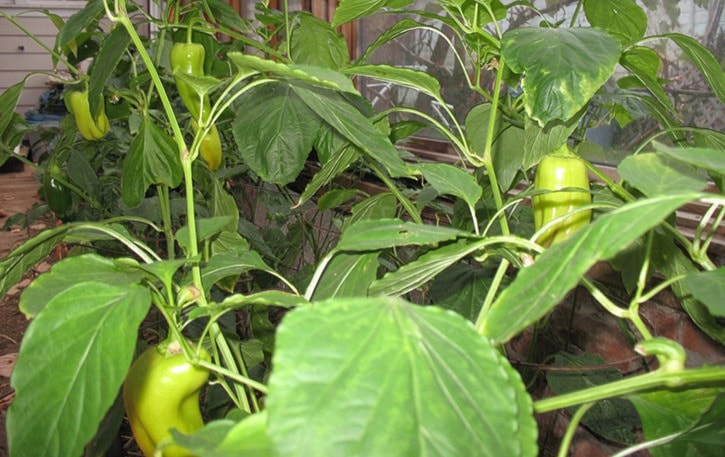One must encourage a man when he’s prepared to do the cooking, so when David gets a notion to rustle up a batch of his excellent clam chowder in January that, he says, won’t work without sweet peppers, one can march smugly out into the greenhouse and pick him some right off the plant. Enough sunlight penetrates the clouds in our neck of the woods to sustain many crops.
A greenhouse can save money and improve one’s quality of life, particularly in winter. If attached to the house, it can help warm things up when an adjoining door is opened on sunny days; but attached or not, a greenhouse can support crops that cold frames cannot and can save us a trip to the store on a cold blustery day to buy them at winter prices.
Many books can scare us off, telling us that we must be scrupulously clean in the greenhouse and scrub everything down once a year with a bleach solution to kill possible disease organisms. We should mist the greenhouse down regularly and set up barrels of water to keep things warm overnight. Sprinkling systems, electric fans and windows that open and shut automatically are de rigour.
I don’t do any of this, yet my grapes produce sweet bunches, and peppers keep ripening until late January in my unheated greenhouse whose temperature averages 3 C (6 F) warmer than outside in winter.
Cold frames and cloches can work well to extend the season out in the garden, but nothing beats a greenhouse for growing more tender crops like cucumbers, tomatoes and peppers. We can keep plants even warmer by covering them with spun cloth cover. I rotate the crops in the greenhouse and find that my fertilizing and foliar spraying regimen produces healthy plants that do not acquire any diseases.
Recycled windows make dandy greenhouses but many farmers find that large, plastic-covered tunnels also work very well. In China, farmers supply 90 per cent of the fresh produce consumed in northern China by using adaptations of walk-in tunnels that depend entirely on the sun for heat and cover more than 640,000 acres.
The north side of the tunnel is a solid wall that absorbs sunlight in the day and radiates heat back into the greenhouse at night: then the heat is retained with insulating blankets that are drawn over the clear plastic-clad south side of the tunnel. The result? Temperatures in February that are maintained between 10 and 15 C warmer than outside.
I’m thinking that my greenhouse needs improvements.
